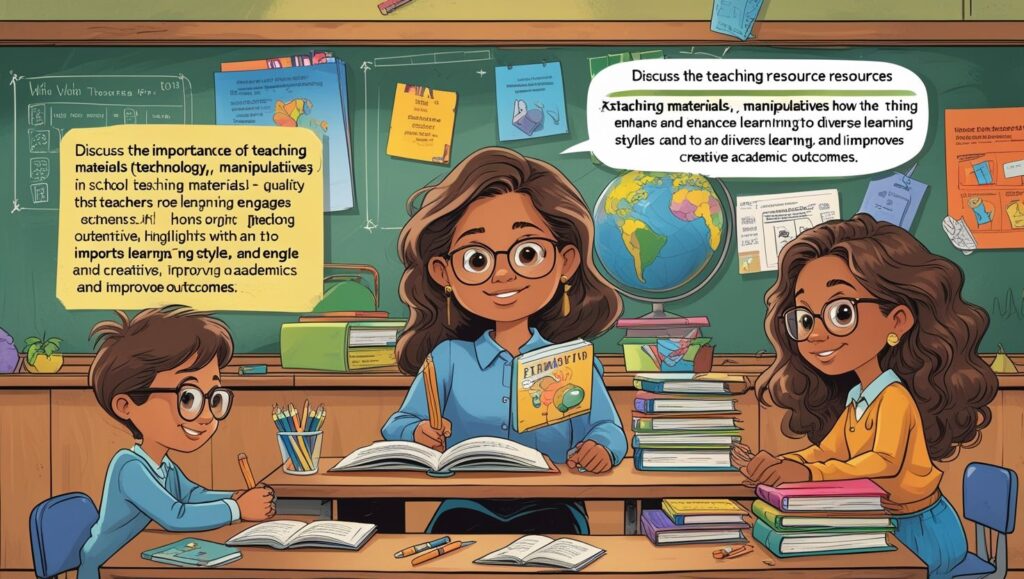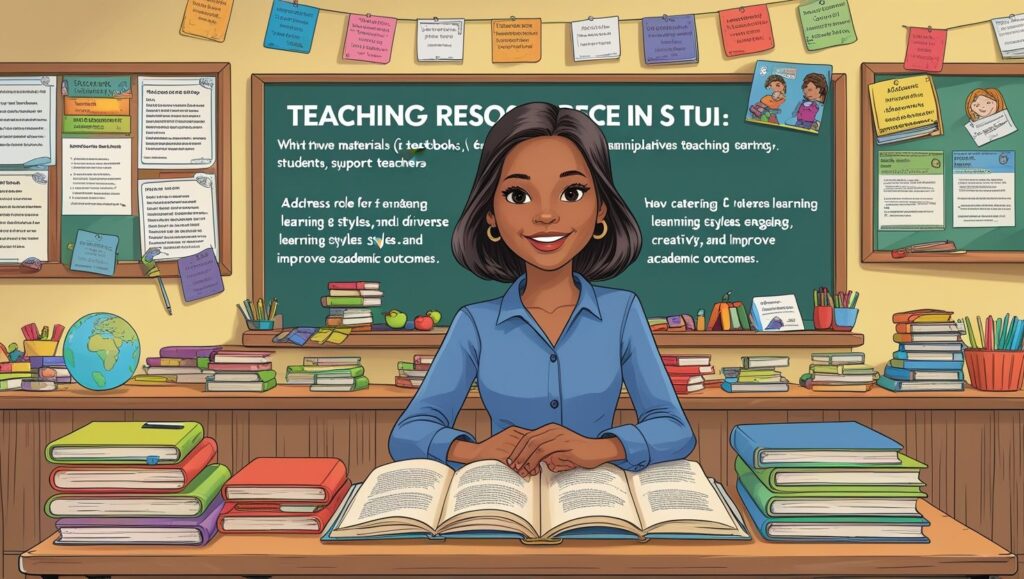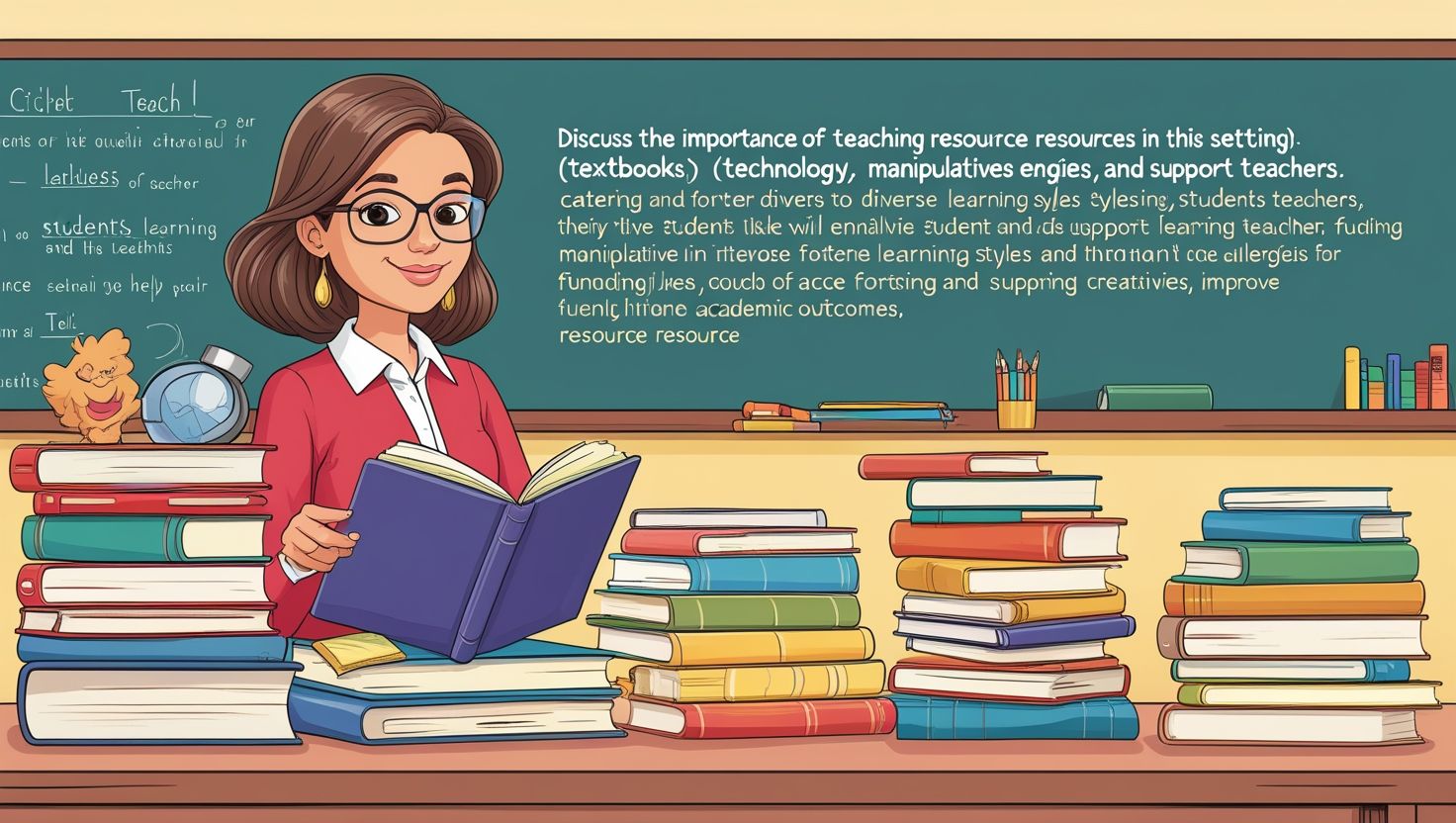Introduction
The Importance of Teaching Resources in a School Setting, Teaching resources serve as the backbone of effective education, providing educators with the necessary tools to deliver knowledge and students with multiple pathways to acquire it. These resources encompass both physical and digital materials – from traditional textbooks and laboratory equipment to cutting-edge virtual reality simulations and artificial intelligence-powered learning platforms. In contemporary educational systems, the strategic selection and implementation of these resources directly correlate with improved academic outcomes, heightened student motivation, and the development of critical life skills.
The evolution of teaching resources mirrors broader societal changes, particularly technological advancements. Where classrooms once relied solely on chalkboards and printed materials, today’s learning environments integrate smart devices, cloud computing, and adaptive learning software. This transformation has created unprecedented opportunities for personalized education, where resources can be tailored to individual learning paces and styles. However, it also presents new challenges in terms of equitable access and effective implementation.
Quality teaching resources do more than convey information – they stimulate curiosity, foster collaboration, and bridge the gap between abstract concepts and real-world applications. A well-equipped science lab, for instance, transforms theoretical physics principles into tangible experiments, while language learning apps use speech recognition to provide immediate pronunciation feedback. This article will examine the full spectrum of available teaching resources, analyze their educational impact, address implementation barriers, and propose actionable strategies for maximizing their potential in diverse school settings.
Types of Teaching Resources
Traditional Teaching Resources
Traditional resources remain foundational in education, offering reliability and tactile learning experiences. Textbooks provide comprehensive, curriculum-aligned content that has been vetted by educational experts, serving as stable reference materials. Workbooks complement these with structured exercises that reinforce daily lessons.
Writing surfaces like chalkboards and whiteboards enable dynamic, real-time instruction where teachers can adapt explanations based on student responses. Printed worksheets offer targeted practice opportunities that can be customized for different skill levels. Visual aids such as anatomical charts, historical timelines, and mathematical formula posters provide constant reference points in classroom environments.
Three-dimensional models and manipulatives make abstract concepts concrete – molecular kits in chemistry, geometric solids in mathematics, or globe models in geography. School libraries house diverse reading materials that nurture independent learning and research skills beyond prescribed syllabi. These traditional tools continue to prove invaluable, particularly in contexts with limited technological infrastructure or for learners who benefit from physical interaction with educational materials.

Modern Digital Teaching Resources
Digital resources have transformed education through interactivity and accessibility. Interactive whiteboards combine the functionality of traditional blackboards with multimedia capabilities, allowing teachers to integrate videos, animations, and internet resources seamlessly into lessons. Educational software like Kahoot! introduces game mechanics to boost engagement, while platforms like Google Classroom streamline assignment distribution and grading.
E-books and online libraries provide instant access to updated information and rare resources that physical libraries might lack. Multimedia tools cater to various learning preferences – educational podcasts for auditory learners, documentary films for visual learners, and interactive simulations for kinesthetic learners. Virtual labs enable students to conduct experiments that would be dangerous, expensive, or impossible in physical settings, while learning management systems offer centralized platforms for course administration, progress tracking, and communication.
Importance of Teaching Resources in Schools
Enhancing Student Engagement
High-quality teaching resources transform passive learning into active participation. Interactive digital tools like Nearpod allow students to respond to questions in real-time, while virtual reality field trips to historical sites or ecosystems create immersive learning experiences impossible to replicate through textbooks alone. Gamified learning platforms incorporate reward systems that mirror video game mechanics, significantly increasing time-on-task and information retention. Research indicates that when students can manipulate 3D molecular models or participate in simulated historical events, their emotional connection to the material deepens, leading to better long-term retention.
Supporting Diverse Learning Styles
Effective teaching resources address the full spectrum of learning preferences identified in Howard Gardner’s theory of multiple intelligences. Visual-spatial learners benefit from infographics and mind-mapping software, auditory learners from recorded lectures and educational podcasts, and kinesthetic learners from interactive simulations and hands-on experiments. Digital platforms like Quizlet allow students to choose their preferred study methods (flashcards, games, practice tests), while adaptive learning software adjusts content presentation based on individual performance patterns. This customization ensures no student is disadvantaged by a one-size-fits-all approach to instruction.
Facilitating Conceptual Understanding
Complex academic concepts become accessible through appropriate resources. In mathematics, graphing calculators and geometry software make abstract relationships visible. Science education benefits tremendously from PhET simulations that demonstrate principles like wave interference or natural selection through adjustable parameters. Language learners gain pronunciation skills through speech recognition tools, while history students analyze primary sources through digital archives. These resources provide concrete reference points that help students construct accurate mental models of challenging subject matter.

Challenges in Implementing Teaching Resources
Financial Constraints
The digital divide in education remains a significant barrier, particularly in developing regions. A single smart classroom setup – including an interactive whiteboard, student tablets, and supporting infrastructure – can cost upwards of $10,000, making widespread implementation impractical for underfunded schools. Even basic digital resources like student laptops represent a substantial investment when scaled across entire districts. This economic barrier perpetuates educational inequality, as students in affluent areas gain access to cutting-edge tools while others make do with outdated materials.
Teacher Training Deficits
The most sophisticated teaching resources remain ineffective without proper educator training. Many professional development programs fail to provide sustained, hands-on training with new technologies, leaving teachers to navigate complex platforms independently. A 2022 OECD study found that only 43% of teachers felt prepared to integrate digital tools effectively. This skills gap leads to underutilization – for example, using expensive interactive whiteboards merely as projection screens rather than leveraging their full interactive capabilities.
Infrastructure Limitations
Reliable implementation of digital resources requires robust supporting infrastructure that many schools lack. Insufficient bandwidth leads to buffering videos and lagging applications during peak usage times. Inconsistent electricity supply in some regions renders technology-dependent lessons unreliable. Physical classroom layouts often don’t accommodate collaborative technologies, with fixed seating arrangements hindering group work with devices. These limitations frequently force educators to abandon planned technology integration at the last minute, disrupting lesson continuity.
Strategies for Effective Implementation
Phased Technology Integration
Schools should adopt a strategic, phased approach to resource implementation rather than attempting complete overhauls. Pilot programs with select classrooms allow for troubleshooting and best practice development before school-wide rollout. Cloud-based solutions reduce upfront hardware costs, while bring-your-own-device (BYOD) policies leverage existing student technology. Partnerships with local businesses can provide refurbished equipment at reduced costs.
Comprehensive Teacher Professional Development
Effective training must extend beyond one-time workshops to include ongoing coaching and professional learning communities. Peer mentoring programs pair tech-savvy teachers with colleagues for just-in-time support. Micro-credentialing in educational technology gives teachers tangible recognition for developing these competencies. Time must be allocated within the school schedule for teachers to explore and practice with new resources before classroom implementation.
Community-Based Solutions
Local communities can play a vital role in sustaining teaching resources. Parent-teacher associations might organize technology fundraising campaigns, while retired professionals could volunteer as technical support specialists. Universities could partner with schools to provide student teachers versed in the latest educational technologies. Such collaborations distribute the responsibility for educational innovation beyond school administrators alone.
Conclusion
Teaching resources represent both the tools and the foundation of modern education. When thoughtfully selected and properly implemented, they have the power to democratize quality education, engage diverse learners, and prepare students for an increasingly complex world. The challenge for educational systems lies not just in acquiring these resources, but in developing comprehensive strategies for their effective use.
The path forward requires balanced investment in both technological infrastructure and human capital. Schools must pair resource acquisition with robust teacher training, technical support systems, and sustainable funding models. By approaching teaching resources as part of an ecosystem rather than isolated tools, educators can create learning environments that are adaptable, inclusive, and future-ready.
Ultimately, the measure of teaching resources’ success lies not in their technological sophistication, but in their ability to make learning more accessible, meaningful, and impactful for all students. As education continues to evolve, so too must our understanding and implementation of the resources that make quality learning possible.

v7g283
Good shout.
Nice
distillate carts area 52
hybrid gummies area 52
best sativa thc edibles area 52
liquid thc area 52
live resin gummies area 52
thc gummies for pain area 52
thc gummies for anxiety area 52
snow caps area 52
live resin area 52
live rosin gummies area 52
live resin carts area 52
thc tinctures area 52
thca diamonds area 52
thc gummies
best thca flower area 52
indica gummies area 52
thcv gummies area 52
liquid diamonds area 52
best disposable vaporizers area 52
thca gummies area 52
บทความนี้มีประโยชน์มากที่พูดถึง IQOS Thailand อธิบายได้ละเอียดชัดเจน
เคยลองใช้แล้วประทับใจ ขอคำแนะนำการเลือกซื้อหน่อยครับ
ขอบคุณสำหรับข้อมูลเกี่ยวกับพวงหรีดที่ชัดเจน
กำลังค้นหาข้อมูลเรื่องนี้อยู่พอดี ถือว่าเจอบทความดีๆ เลย
จะเก็บข้อมูลนี้ไว้ใช้แน่นอน ขอบคุณอีกครั้งครับ/ค่ะ
Revview my website … ร้านจัดดอกไม้งานศพ